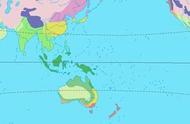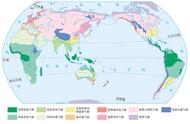联合国气候报告反复强调,要把全球升温幅度控制在1.5摄氏度以内。此前《巴黎协定》提出的目标是,要把升幅控制在2摄氏度以内,同时尽力不超过1.5摄氏度。全球升温1.5度和2度的区别到底有多大?

在格拉斯哥举行的联合国气候变化大会上,世界各国*反复强调,必须把全球变暖幅度控制在1.5摄氏度以内。
Over and over at the UN climate summit in Glasgow, world leaders have stressed the need to limit global warming to 1.5 degrees Celsius.
2015年达成的《巴黎协定》中,各国政府承诺将全球平均温度控制在比前工业化水平升温2摄氏度以内,并努力达到升温1.5摄氏度以内的目标。
The 2015 Paris Agreement commits countries to limit the global average temperature rise to well below 2°C above pre-industrial levels, and to aim for 1.5°C.
科学家指出,升温幅度超过1.5摄氏度意味着人类、野生动植物和生态系统都可能遭受气候变化带来的更严重后果。
Scientists have said crossing the 1.5°C threshold risks unleashing far more severe climate change effects on people, wildlife and ecosystems.
防止全球升温超过1.5摄氏度要求我们在2030年前将全球碳排放量减少为2010年的一半,并在2050年前实现净零排放。
Preventing it requires almost halving global CO2 emissions by 2030 from 2010 levels and cutting them to net-zero by 2050.
但是全球升温1.5摄氏度和升温2摄氏度有什么不同呢?
But what is the difference between 1.5°C and 2°C of warming?
当前,全球温度已经比前工业化水平高出约1.1摄氏度。过去四个十年的气温比1850年以来的任何一个十年都更高。
Already, the world has heated to around 1.1°C above pre-industrial levels. Each of the last four decades was hotter than any decade since 1850.
德国气候服务中心的气候科学家丹妮拉·雅各布说:“仅仅数十年就升温这么多,这样的全球变暖是从未发生过的。升温0.5度意味着更极端的天气会更频繁地出现,极端天气会更恶劣或持续更长时间。”
"We never had such a global warming in only a few decades", said climate scientist Daniela Jacob at the Climate Service Center Germany. "Half a degree means much more extreme weather, and it can be more often, more intense, or extended in duration."
就在今年,欧洲西部暴雨引发的洪水令数百人丧生。太平洋西北地区的破纪录高温天气也导致数百人死亡。格陵兰岛冰川大规模融化。地中海地区和西伯利亚野火肆虐。巴西部分地区遭遇了史上罕见的旱灾。
Just this year, torrential rains flooded Western Europe, killing hundreds of people. Hundreds more died when temperatures in the Pacific Northwest hit record highs. Greenland saw massive melting events, wildfires ravaged the Mediterranean and Siberia, and record drought hit parts of Brazil.

东英吉利亚大学的气候科学家瑞秋·沃伦说:“气候变化已经影响到了人类居住的每个角落。”
"Climate change is already affecting every inhabited region across the globe," said climate scientist Rachel Warren at the University of East Anglia.
全球升温超过1.5摄氏度将会加剧气候变化的影响。比如,高温将会更频繁地来袭,程度也会更严重。
More warming to 1.5°C and beyond will worsen such impacts. For example, heatwaves would become both more frequent and more severe.
气温升高还会让大气变得更湿润,引发更多强降雨,从而增加洪水风险。蒸发量增加还会导致更严重的干旱。
A warmer atmosphere can also hold more moisture, resulting in more extreme rainfall that raises flood risks. It also increases evaporation, leading to more intense droughts.
宾夕法尼亚州立大学的气候科学家迈克尔·曼恩说:“如果升温幅度在1.5摄氏度以内,我们还有可能防止格陵兰岛和南极西部的大部分冰盖融化崩塌。”
"At 1.5°C, there’s a good chance we can prevent most of the Greenland and west Antarctic ice sheet from collapsing," said climate scientist Michael Mann at Pennsylvania State University.
这有助于在本世纪末将海平面上升水平控制在几英尺以内,尽管海平面上升几英尺仍然会造成巨变,包括侵蚀海岸线、淹没一些小岛国和沿海城市。
That would help limit sea level rise to a few feet by the end of the century - still a big change that would erode coastlines and inundate some small island states and coastal cities.
曼恩说,但是如果升温幅度超过2摄氏度,冰盖就会瓦解,海平面会上升10米之多。不过,不确定这一天来得会有多快。
But blow past 2°C and the ice sheets could collapse, Mann said, with sea levels rising up to 10 metres - though how quickly that could happen is uncertain.
全球升温1.5摄氏度会摧毁至少70%的珊瑚礁,但是如果升温2摄氏度,超过99%的珊瑚礁都会死亡。这对于依赖珊瑚觅食和栖息的鱼群是一个毁灭性打击。
Warming of 1.5°C would destroy at least 70% of coral reefs, but at 2°C more than 99% would be lost. That would destroy fish habitats and communities that rely on reefs for their food and livelihoods.
全球升温由1.5摄氏度到2摄氏度还会加大对粮食生产的影响。
Warming of 2°C, versus 1.5°C, would also increase the impact on food production.
伦敦大学学院的气候科学家西蒙·路易斯说:“如果世界上的几个粮食主产地同时发生农作物歉收,大范围的食品价格飞涨和饥荒将会席卷全球。”
"If you have crop failures in a couple of the breadbaskets of the world at the same time, then you could see extreme food price spikes and hunger and famine across wide swathes of the world," said climate scientist Simon Lewis at University College London.
全球变暖会导致携带疟疾和登革热病毒的蚊虫大范围滋生。相比升温1.5摄氏度,升温2摄氏度会让更多昆虫和动物失去大部分栖息地,还会增加森林火灾风险,进而危及野生动植物的生存。
A warmer world could see the mosquitoes that carry diseases such as malaria and dengue fever expand across a wider range. But 2°C would also see a bigger share of insects and animals lose most of their habitat range, compared with 1.5°C, and increase the risk of forest fires - another risk to wildlife.

随着全球变暖,地球达到“临界点”的风险也会增加。一旦到达这个临界点,就会触发地球系统不可逆转的连锁效应。但是具体何时到达临界点还不确定。
As the world heats up, the risk increases that the planet will reach "tipping points", where Earth’s systems cross a threshold that triggers irreversible or cascading impacts. Exactly when those points would be reached is uncertain.
举例来说,干旱、降雨减少以及对亚马逊雨林持续性的砍伐,将会导致雨林系统崩溃,结果就是将二氧化碳释放到空气中而不是将二氧化碳储存起来。北极永久冻土的融化会导致冰封多年的生物遗骸腐烂,从而产生大量的二氧化碳。
Droughts, reduced rainfall, and continued destruction of the Amazon through deforestation, for example, could see the rainforest system collapse, releasing CO2 into the atmosphere rather than storing it. Or warming Arctic permafrost could cause long-frozen biomass to decompose, releasing vast amount of carbon emissions.
科学家指出,全球升温2.7摄氏度会导致热带和亚热带地区在一年中的部分季节“因为炎热而无法居住”。生物多样性会遭到极大破坏,粮食安全将受到冲击,极端天气将会超出多数城市基建的应对能力。
Warming of 2.7°C would deliver "unliveable heat" for parts of the year across areas of the tropics and subtropics. Biodiversity would be enormously depleted, food security would drop, and extreme weather would exceed most urban infrastructure's capacity to cope, scientists said.
曼恩说:“如果我们能把全球升温控制在3摄氏度以内,人类文明可能还能够适应气候变化的影响,但是升温幅度达到2.7摄氏度后,我们的日子就会很难过。”
"If we can keep warming below 3°C we likely remain within our adaptive capacity as a civilization, but at 2.7°C warming we would experience great hardship," said Mann.
中国日报网英语点津
来源:中国日报网

























